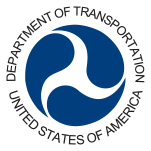Audit Reports
PHMSA’s State Pipeline Safety Program Lacks Effective Management and Oversight
Summary
The Nation’s network of approximately 2.5 million miles of pipelines moves millions of gallons of hazardous liquids and 55 billion cubic feet of natural gas every day. DOT’s Pipeline and Hazardous Materials Safety Administration (PHMSA) authorizes States to oversee and enforce operators’ compliance with Federal pipeline safety regulations through its State Pipeline Safety Program. PHMSA also allocates grants to State programs. In September 2010, an intra-State natural gas pipeline exploded in San Bruno, CA, resulting in eight fatalities, injuries, and destroyed homes. In its investigation of the explosion, the National Transportation Safety Board found weaknesses in PHMSA’s oversight of State programs, and recommended that DOT assess the effectiveness of PHMSA’s oversight of intra‑State pipeline safety and whether State programs use Federal grants effectively. Accordingly, we assessed PHMSA’s (1) policies and procedures for managing its State Pipeline Safety Program, including guidelines to participating States, and (2) oversight of State pipeline safety programs.
PHMSA’s guidelines, policies, and procedures for State pipeline safety programs lack elements to ensure State inspections cover all Federal requirements and pipeline operators maintain safety standards. The staffing formula in the guidelines is outdated. The guidelines also lack sufficient detail on States’ use of risk factors for scheduling inspections and do not require PHMSA evaluators to review the adequacy of States’ inspection procedures. Furthermore, PHMSA lacks formal written procedures to guide its triennial reviews of State programs’ expenditures.
PHMSA’s oversight of State pipeline safety programs also does not ensure that States comply with program evaluation requirements and properly use all grant funds. Lapses in oversight have resulted in undetected safety weaknesses in State programs. Because it has not accounted for these non-compliances, the Agency cannot be sure that States correct program deficiencies. Furthermore, PHMSA has neither provided States sufficient guidance on suspension funds nor completed financial audits of their use.
PHMSA concurred or partially concurred with our seven recommendations to improve PHMSA’s oversight of State pipeline safety programs and grants. We have requested that that the Agency reconsider its response to one recommendation and provide further information in support of its actions taken or planned for the six other recommendations.
